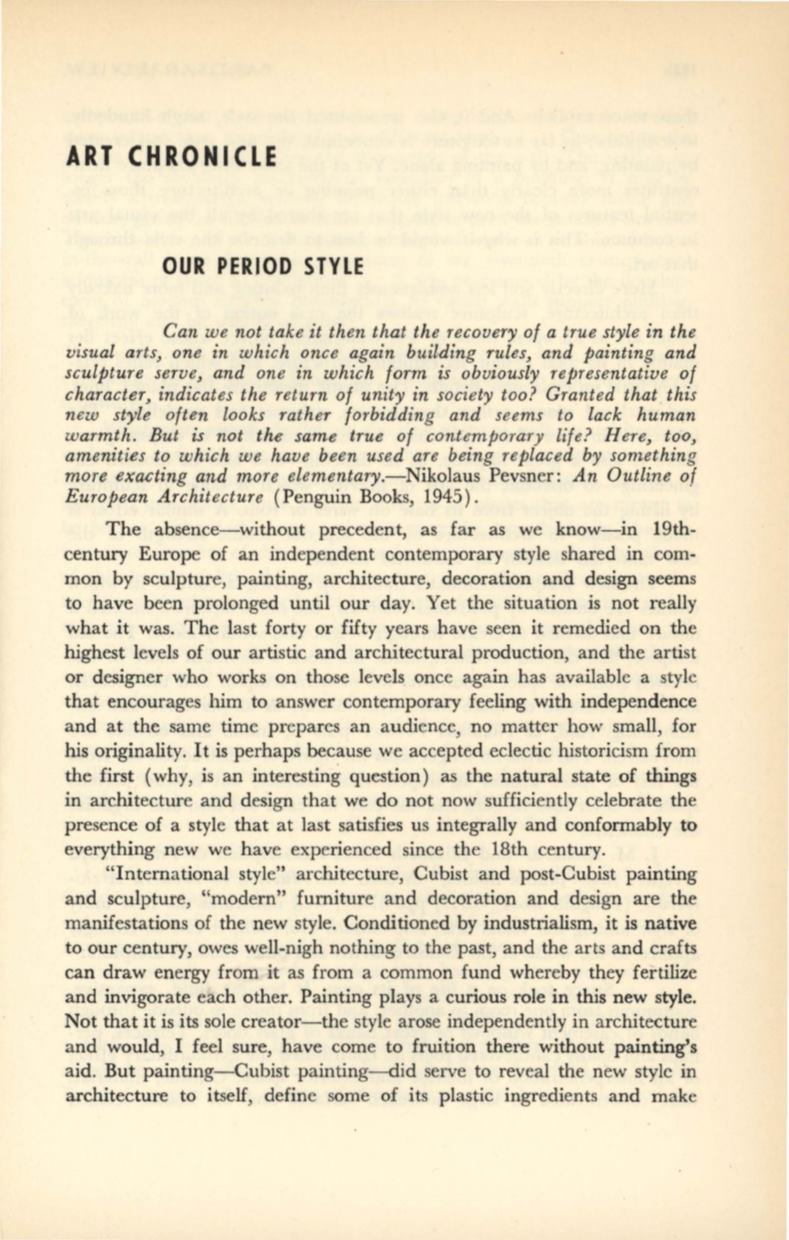
ART CHRONICLE
OUR PERIOD STYLE
Can we not take it then that the recovery of a true style in the
visual arts, one in which once again building rules, and painting and
sculpture serve, and one in which form is obviously representative of
character, indicates the return of unity in society too? Granted that this
new style often looks rather forbidding and seems to lack human
warmth. But is not the same true of contemporary life? Here, too,
amenities to which we have been used are being replaced by something
more exacting and more elementary.-Nikolaus
Pevsner:
An Outline of
European Architecture
(Penguin Books, 1945).
The absence-without precedent, as far as we know-in 19th–
century Europe of an independent contemporary style shared in com–
mon by sculpture, painting, architecture, decoration and design seems
to have been prolonged until our day. Yet the situation is not really
what it was. The last forty or fifty years have seen it remedied on the
highest levels of our artistic and architectural production, and the artist
or designer who works on those levels once again has available a style
that encourages him to answer contemporary feeling with independence
and at the same time prepares an audience, no matter how small, for
his originality.
It
is perhaps because we accepted eclectic historicism from
the first (why, is an interesting question) as the natural state of things
in architecture and design that we do not now sufficiently celebrate the
presence of a style that at last satisfies us integrally and conformably
to
everything new we have experienced since the 18th century.
"International style" architecture, Cubist and post-Cubist painting
and sculpture, "modern" furniture and decoration and design are the
manifestations of the new style. Conditioned by industrialism, it is native
to our century, owes well-nigh nothing to the past, and the arts and crafts
can draw energy from it as from a common fund whereby they fertilize
and invigorate each other. Painting plays a curious role in this new style.
Not that it is its sole creator- the style arose independently in architecture
and would, I feel sure, have come to fruition there without painting's
aid. But painting- Cubist painting-did serve to reveal the new style in
architecture to itself, define some of its plastic ingredients and make


